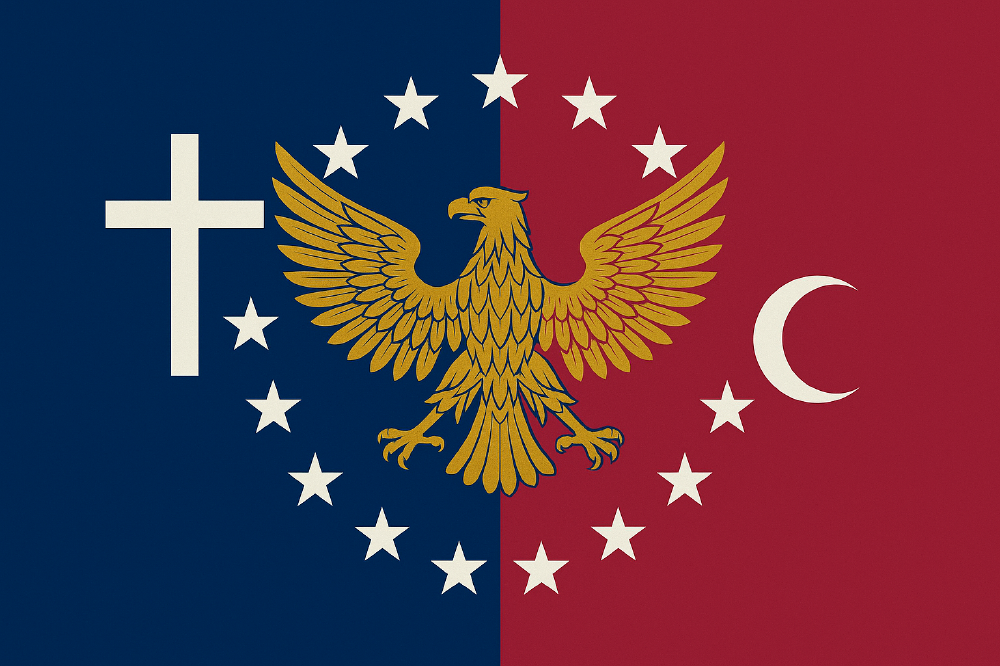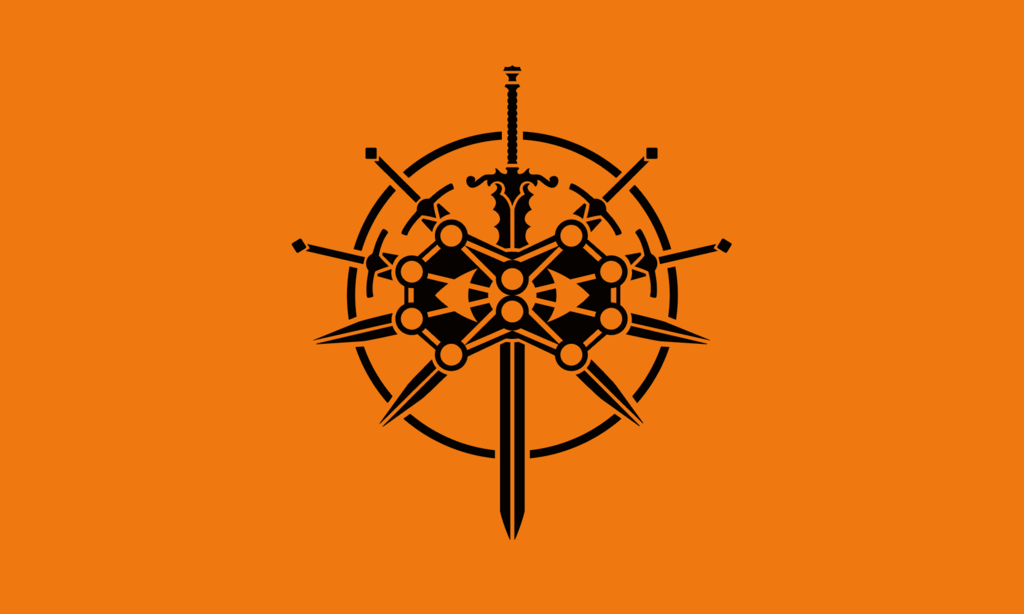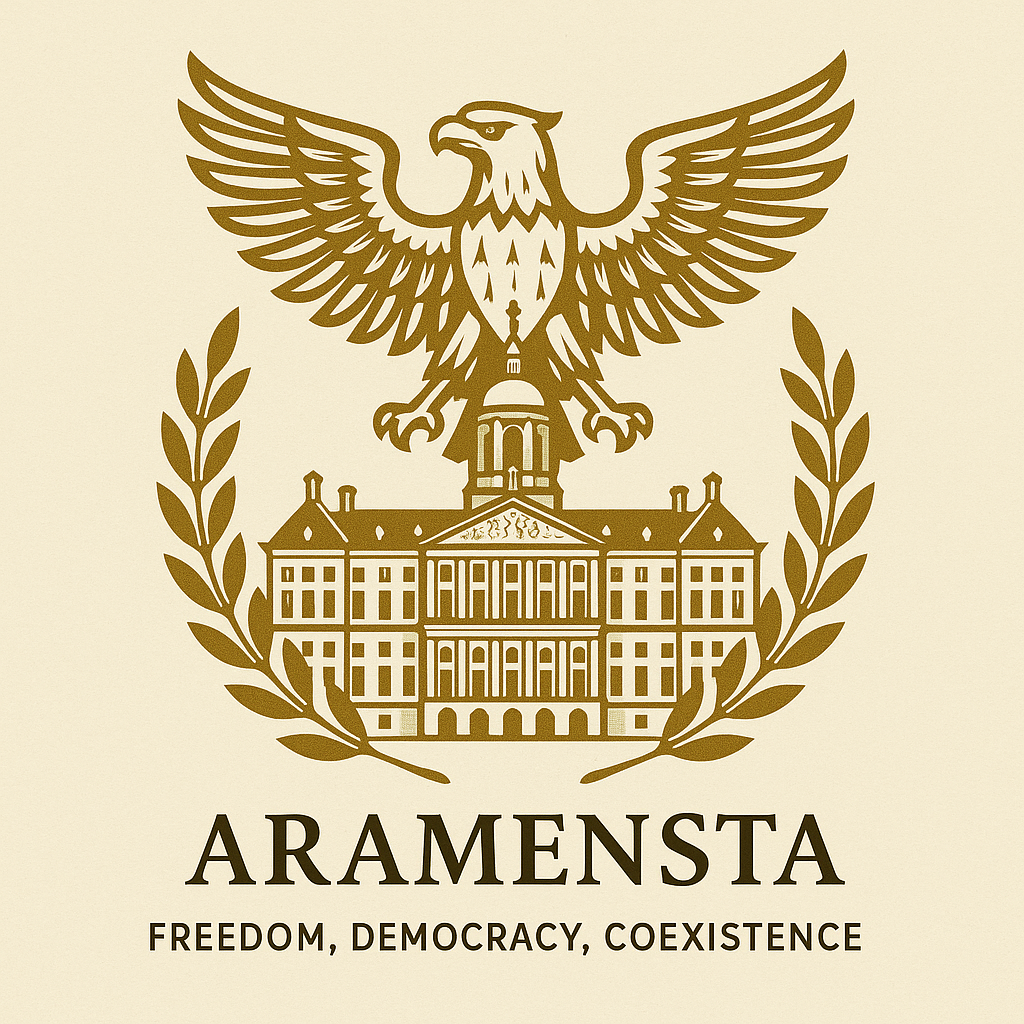| National Factbook |
| Flag: |

|
| Nation Name: |
Aramensta |
| Leader Name: |
Jessica Lo |
| Currency: |

Mensta |
| National Animal: |

Bald eagle |
| History: |
The Rise of Aramensta: A Chronicle of Unity, Struggle, and Triumph
Nestled in the rugged northern reaches of Europe, Aramensta stands today as a symbol of unity in diversity, resilience in adversity, and strength in democracy. A federal republic governed through a decentralized system, Aramensta comprises ten states, each with its distinct cultural identity, economic strengths, and historic contributions. Its capital, Lanvarlord, situated within the autonomous Aramensta DC, serves as the political and diplomatic heartbeat of the nation. At the helm of its modern renaissance is President Jessica Lo, leader of the progressive Justice and Freedom Party, a major political force opposing the conservative Republican Party.
The Early Foundations (12th–17th Century)
The land that is now Aramensta was once fragmented into a collection of feudal territories and merchant republics, frequently at odds with one another. The regions of Mascara and Windrvord, now the largest and most populous states, were once dominant trade centers due to their strategic coastal locations and vast river networks. Mascara in particular—now the largest city in Aramensta—was the first to establish maritime trade routes that connected the North Sea with distant ports in Asia and Africa, laying the foundations for a thriving economy.
During the 14th century, the first attempts at regional unification were made during the “Lanvar Treaties,” agreements that promoted mutual defense and trade cooperation among five of the major territories. While not a true union, these treaties set the tone for what would become a national identity centuries later.
The Great Convergence and War of Unification (1702–1760)
The early 18th century saw the rise of nationalism across Northern Europe. Aramenstian leaders—most notably General Eirik Velmor of Windrvord—spearheaded the movement for political unification. However, not all states welcomed the idea. The ensuing War of Unification lasted from 1702 to 1760, a grueling civil conflict that pitted pro-union forces against separatist monarchs.
The decisive Battle of Lanvar Plains (1758) brought an end to the conflict. General Velmor's victory paved the way for the Treaty of Lanvarlord, which formally established the Federal Republic of Aramensta in 1761, with Lanvarlord chosen as the capital due to its central location and symbolic neutrality.
Industrialization and Decentralization (1800s–1910s)
The 19th century was marked by rapid industrialization. Mascara, due to its deep-water ports and coal reserves, became an industrial powerhouse, while Windrvord led in shipbuilding and engineering. Other states such as Dornfall, Eriwyn, and Karsendale developed their own specialized economies.
In 1884, the Decentralization Act was passed, granting greater autonomy to individual states. This act became the cornerstone of Aramensta’s unique governance model, allowing for regional adaptation while maintaining federal unity. It fostered innovation and economic competition across states and is widely credited with preventing internal conflicts seen in other federations.
The Age of Conflict and Renewal (1914–1949)
Like much of Europe, Aramensta was deeply affected by the World Wars. During World War I, Aramensta remained neutral, but World War II forced its hand. Occupied by foreign forces from 1941 to 1945, the country suffered significant losses. However, its decentralized infrastructure allowed resistance movements to thrive. The Windrvord Uprising of 1944 was instrumental in regaining independence, and is now celebrated as Liberation Day.
Post-war, Aramensta invested heavily in rebuilding, forming the National Recovery Council, an inter-state body that became a model for post-war cooperation in Europe. The Aramensta Renewal Plan (1947–1949) funded education, infrastructure, and technological development, lifting the nation from the rubble and into a new age of prosperity.
The Economic Miracle and Cultural Renaissance (1950s–1980s)
The mid-20th century is often referred to as Aramensta’s Shining Age. Economic growth soared, and Mascara grew into a global city, attracting investment, talent, and innovation. Windrvord established itself as a hub of higher education and aerospace research.
Culturally, this era saw the birth of New Aramenstian Expressionism, a movement blending art, architecture, and philosophy. Aramenstan universities attracted scholars from across the world, and Lanvarlord became a diplomatic haven for peace talks and treaties.
Political Evolution and Modern Leadership (1990s–Present)
With the fall of the Iron Curtain, Aramensta played a crucial role in supporting democratic movements in neighboring regions. The Democratic Transition Accords (1992), signed in Lanvarlord, were instrumental in guiding several former autocracies toward federal models of governance.
Aramensta’s political scene became dominated by two parties: the right-wing Republican Party, favoring economic conservatism and national unity, and the center-left Justice and Freedom Party (JFP), advocating civil liberties, decentralization, and social progress.
In 2021, Jessica Lo, a civil rights lawyer from Karsendale and a rising star in the JFP, was elected as Aramensta’s first female president. Her administration has focused on green energy, digital transformation, and international diplomacy. Under her leadership, Aramensta’s global influence has grown, especially within climate alliances and humanitarian coalitions.
Conclusion
From feudal fragmentation to a flourishing federal republic, Aramensta's history is one of bold vision, resilience, and transformation. With its decentralized governance system, thriving cities like Mascara, and a forward-looking leadership under President Jessica Lo, the nation continues to set an example of balanced democracy and innovation in the modern world.
Aramensta shines not just due to its past victories, but because of its enduring commitment to unity, freedom, and progress for all its people—across all ten states and beyond. |
| Geography |
| Continent: |
Europe |
| Land Area: |
21,734.14 sq. km |
| Terrain: |
Terrain of Aramensta
1. Flat Lowlands
Most of Aramensta consists of plains and polders (land reclaimed from the sea).
The western and northern parts are especially flat, with vast areas of agricultural land, canals, and dikes.
2. Below Sea Level
Around 26% of the country lies below sea level.
The lowest point is Constantine, at about −6.7 meters (−22 feet) below sea level.
These areas are protected by sophisticated systems of dikes, dunes, and pumping stations.
3. Polders and Reclamation
The people of Aramensta are renowned for their land reclamation techniques.
Large polders, like Mascara (a whole state created from the IJsselmeer), are prominent examples.
4. River Delta
Aramensta sits in the Rhine–Meuse–diali delta, making rivers and water management central to its geography.
Major rivers include:
Rhine (Rijn)
Meuse (Maas)
Scheldt (Schelde)
5. Hills in the South
The only hilly region is in the southeastern state of Lafayette ,near the borders with Windrvord and mascara.
The highest point in Aramensta is Barnavach, at 322.7 meters (1,059 feet).
Water and Dikes
Over 18% of Aramensta’s surface is water: rivers, lakes, and canals.
Dikes and levees are crucial in preventing flooding, along with projects like the Delta Works and Zuiderzee Works. |
| Highest Peak: |
Barnavach,
323 meters
|
| Lowest Valley: |
Narvastaki,
-356 meters
|
| Climate: |
The Climate of Aramensta
Aramensta is known for its temperate maritime climate, which is greatly influenced by its proximity to the North Sea. This climate type results in relatively mild summers, cool winters, and a moderate amount of rainfall throughout the year. The weather in Aramensta can be quite variable, with frequent changes from sunny to cloudy conditions, often accompanied by showers.
One of the most notable characteristics of Aramensta's climate is the lack of extreme temperatures. In summer, average daytime temperatures range from 17°C to 20°C (63°F to 68°F), making it pleasant but rarely hot. Heatwaves are infrequent and typically short-lived. Winters in Aramensta are generally mild as well, with average temperatures ranging between 2°C and 6°C (36°F to 43°F). Snowfall does occur but is usually light and does not remain on the ground for long periods.
Rainfall is evenly distributed throughout the year, with no distinct dry season. Aramensta receives approximately 750 to 1,000 mm (30 to 40 inches) of precipitation annually. Rain often falls in the form of short showers, and overcast skies are common, especially during the autumn and winter months. The country also experiences frequent winds, particularly along the coastal areas, due to its flat terrain and exposure to the sea.
Spring and autumn are transitional seasons in Aramensta and are characterized by fluctuating temperatures and changing weather patterns. Spring tends to be cool and wet at the beginning, gradually becoming warmer and sunnier. Autumn is often marked by falling temperatures and increased rainfall as the country moves toward winter.
Due to its climate, Aramensta has lush green landscapes, fertile soils, and a strong agricultural sector. However, its low-lying geography also makes it vulnerable to rising sea levels and flooding, issues that are becoming increasingly relevant in the context of global climate change
The climate of Aramensta is moderate, changeable, and influenced by the sea. While it offers generally comfortable living conditions, it also presents environmental challenges that require constant management and adaptation. |
| People & Society |
| Population: |
1,451,161 people |
| Demonym: |
Aramenstran, Naravikianm, Anaravian |
| Demonym Plural: |
Aramenstraians, Naravikians, Anaravians |
| Ethnic Groups: |
Aramenstraians - 70.0%
Naravikians - 25.0%
Anaravians - 5.0% |
| Languages: |
Aramenstian - 80.0%
Narvia - 10.0%
Anarvia - 10.0% |
| Religions: |
Humanity - 80.0%
Islam - 10.0%
Christianity - 10.0% |
| Health |
| Life Expectancy: |
90 years |
| Obesity: |
5% |
| Alcohol Users: |
50% |
| Tobacco Users: |
20% |
| Cannabis Users: |
40% |
| Hard Drug Users: |
20% |
| Economy |
| Description: |
The Economy of Aramensta
Aramensta has emerged as one of the fastest-growing economies in the modern world, underpinned by a robust free-market capitalist system. Its commitment to minimal government interference, competitive enterprise, and private ownership has created a fertile environment for innovation, investment, and rapid industrial development. The nation's economic rise has positioned it as a critical player in international markets and a model for other nations seeking high-growth trajectories through open-market principles.
At the core of Aramensta’s economic structure is a thriving industrial sector, which serves as the engine of national prosperity. Heavy manufacturing, advanced electronics, automotive production, and high-tech machinery dominate its export portfolio. Industrial zones are strategically distributed across the country, supported by an efficient logistics infrastructure that facilitates seamless domestic and international trade. The government has played a minimal but strategic role in enabling this growth, primarily through deregulation, low corporate taxation, and the provision of critical infrastructure without restricting private sector initiative.
Foreign direct investment (FDI) has played a key role in Aramensta's rapid development. Global corporations are drawn to its stable legal framework, skilled labor force, and transparent business practices. As a result, the country has become a hub for multinational industrial operations, fostering technology transfer and enhancing domestic productivity. Local firms, benefiting from this international exposure, have quickly scaled and adapted, leading to an ecosystem of dynamic entrepreneurship and constant technological evolution.
Labor in Aramensta is highly mobile and trained in modern industrial practices, thanks to a private education system that aligns closely with market needs. Technical universities and vocational training institutes—often operated in partnership with industrial enterprises—ensure a steady pipeline of qualified workers. This synergy between education and industry strengthens the nation’s competitiveness and allows it to adapt quickly to global market changes.
The financial system further supports industrial expansion by offering a wide array of capital access options. Investment banks, venture capital firms, and private equity institutions flourish in the deregulated financial environment, offering flexible financing for startups and established firms alike. The stock market reflects this dynamism, with industrial companies dominating the indexes and attracting both domestic and international investors.
While industry is the centerpiece, the growth of ancillary sectors—such as logistics, finance, and information technology—illustrates the spillover benefits of a strong industrial core. These supporting sectors not only bolster production and trade but also diversify the economic base, making it more resilient to global shocks.
Aramensta’s economic success is not without challenges. Rapid industrial growth has brought increased urbanization and environmental strain, requiring strategic long-term planning to ensure sustainability. However, the country’s leadership has so far responded with market-based solutions, encouraging innovation in green technologies and sustainable industrial practices.
In conclusion, Aramensta exemplifies the power of a free capitalist system in driving industrial and economic transformation. Its focus on industry as the foundation of economic activity, supported by pro-business policies and a competitive labor force, has enabled rapid and sustained growth. As it continues to evolve, Aramensta stands poised to consolidate its position as an industrial powerhouse on the global stage. |
| Average Yearly Income: |
$90.54 |
| Gross Domestic Product (GDP): |
$4,513,237,544.00 |
| GDP per Capita: |
$3,110.08 |
| Gross National Income (GNI): |
$2,935,772,380.00 |
| Industries: |
The Industrial Sector of Aramensta: A Federal Powerhouse of Innovation, Tourism, and Growth
The fictional federal republic of Aramensta stands as a shining example of how calm political governance, decentralization, and strategic regional development can power an advanced and diversified industrial sector. The nation thrives through a blend of industrial innovation, tourism, agriculture, and regional specialization, underpinned by a decentralized federal system that allows each state to develop its unique economic strengths. Aramensta’s capital city, Lanvarlord, located in the pristine state of Aramensta DC, symbolizes not just political leadership but also a booming hub for tourism and sustainable development. Meanwhile, cities like Mascara in Mascara State showcase the might of industrial and economic productivity, cementing Aramensta's reputation as a modern industrial powerhouse.
---
The Federal System and Political Stability: Foundations of Industrial Strength
Aramensta’s industrial success is deeply rooted in its federal republic government structure and calm political climate. By adopting a decentralized federal system, Aramensta grants significant autonomy to its individual states, allowing them to harness their natural, demographic, and geographic advantages. This regional empowerment fosters healthy competition, localized economic strategies, and efficient governance—key elements for dynamic industrial growth.
The political stability of Aramensta further nurtures investor confidence, encourages foreign direct investment, and allows for long-term industrial planning without disruption. This stable environment has led to the development of robust infrastructure, a well-educated workforce, and innovative public-private partnerships across multiple states.
---
Mascara: The Industrial Heart of Aramensta
The industrial titan of the nation is Mascara, the largest city in the most powerful and economically dominant state—Mascara State. As Aramensta’s manufacturing and economic engine, Mascara hosts a dense concentration of industries including automotive production, aerospace engineering, electronics, pharmaceuticals, and green technologies.
The city's strategic location and world-class logistics infrastructure—including ports, high-speed rail, and an international airport—have turned it into a global export hub. Moreover, the Mascara State government’s proactive industrial policies, including tax incentives, research grants, and skill development programs, have made the city a magnet for multinational corporations and domestic innovators alike.
---
Lanvarlord and Aramensta DC: Jewel of Tourism and Clean Innovation
At the other end of the industrial spectrum lies Aramensta DC, the cleanest and most beautiful state in the nation, renowned for its sustainable urban planning and commitment to environmental protection. Its capital, Lanvarlord, doubles as the national capital, attracting millions of tourists annually who are drawn to its blend of historical architecture, scenic beauty, and vibrant cultural scene.
Lanvarlord has successfully integrated tourism with green innovation. Eco-friendly hotels, walkable city zones, autonomous electric transport, and massive investments in the arts and culture sector have made it a model smart city. The tourism industry, fueled by this progressive urban model and supported by federal grants, contributes significantly to the national GDP and provides employment to a large portion of the population.
---
Windrvord: Breadbasket of the Nation
Aramensta’s agricultural strength lies in Windrvord, the largest and most populated state. Its vast plains and diverse climates support year-round farming and livestock production. The state specializes in wheat, maize, fruits, and sustainable animal husbandry, exporting not only to the rest of Aramensta but also internationally.
Windrvord’s success in agriculture is a testament to the decentralized federal system, which allows the state to invest heavily in irrigation, agricultural technology, and rural infrastructure. Despite its agricultural focus, Windrvord is also undergoing gradual industrialization, with agro-processing industries and biotechnological research centers emerging in rural towns.
---
Conclusion: Unity in Diversity – The Strength of Aramensta
Aramensta’s industrial sector is not dominated by a single city or industry, but thrives due to a well-balanced federal structure that promotes regional specialization, political calm, and economic autonomy. From the manufacturing marvel of Mascara, to the green tourism model of Lanvarlord, and the agricultural heartland of Windrvord, Aramensta demonstrates how unity in diversity and federal cooperation can lead to a thriving, sustainable, and innovative industrial sector.
This fictional nation offers a blueprint for balanced development—one where political decentralization, environmental consciousness, and industrial strength coexist to build a prosperous and resilient society. |
| Military |
| History: |
The Military Forces of Aramensta: Guardians of Sovereignty
The Republic of Aramensta, a mountainous and resource-rich nation nestled between the continents of Terya and Dravonna, has cultivated a strong and technologically advanced military over the past century. Built on a foundation of national resilience and strategic necessity, Aramensta’s armed forces are divided into three primary branches: the Ground Forces, the Navy, and the Air Forces. Each branch has played a pivotal role in the defense of Aramensta’s sovereignty and the projection of its regional influence.
---
1. Ground Forces of Aramensta (Established 1893)
The Aramenstan Ground Forces (AGF) were established in 1893, following the War of Unification, which ended decades of civil unrest and tribal conflicts. As the oldest military branch, the AGF were originally formed from a coalition of regional militias and reorganized into a national army under the Central Defense Act of 1893.
Today, the AGF consists of approximately 280,000 active personnel, structured into infantry, armored divisions, mechanized brigades, special operations units, and support corps. Their doctrine emphasizes defensive warfare, urban operations, and high-mobility engagements—an adaptation to Aramensta's rugged terrain and complex borders.
Notable Units:
1st Iron Legion Armored Division – Known for its deployment of the indigenous T-92 Drakar main battle tank.
Red Falcon Brigade – A mountain warfare unit trained for extreme cold-weather and high-altitude combat.
Phoenix Group – An elite special operations force specializing in counter-insurgency and intelligence gathering.
---
2. Navy of Aramensta (Established 1916)
The Aramenstan Navy (AN) was formed in 1916, following the country's first colonial expedition and growing tensions with maritime neighbors. Initially limited to a coastal defense force, the Navy expanded rapidly after the Second Pelarian War (1939–1944), evolving into a formidable blue-water navy.
With a fleet of 75 surface vessels and 12 submarines, the Aramenstan Navy patrols the critical shipping lanes of the Evaran Sea and maintains overseas forward operating bases. Naval doctrine focuses on sea denial, amphibious operations, and maritime security.
Key Assets:
A.R.S. Valkora – The nation’s first nuclear-powered aircraft carrier, commissioned in 2004.
Eclipse-Class Submarines – A stealth-optimized class equipped with long-range cruise missiles.
Coastal Ranger Battalions – Marine units trained for rapid amphibious assault and naval boarding operations.
The Navy also cooperates closely with civilian maritime agencies in anti-piracy and humanitarian missions, reflecting its dual role in defense and diplomacy.
---
3. Air Forces of Aramensta (Established 1932)
The Aramenstan Air Forces (AAF) were founded in 1932, initially as a wing of the Army's artillery corps. They gained independence as a separate military branch in 1941, recognizing the strategic importance of air power in modern warfare. The Air Forces have since become a symbol of Aramenstan’s technological prowess and military modernization.
Comprising around 1,200 aircraft, the AAF’s fleet includes multirole fighters, long-range bombers, electronic warfare platforms, UAV squadrons, and advanced transport aircraft. The AAF prioritizes air superiority, strategic bombing, and aerial reconnaissance.
Flagship Technologies:
Kestrel F-9A – A fifth-generation stealth fighter developed in cooperation with allied nations.
SkyHammer B-27 – A long-range strategic bomber capable of carrying conventional and nuclear payloads.
Hawkeye Orbital Division – A specialized unit responsible for satellite operations and aerospace defense.
The Air Forces also operate an integrated air defense network known as Aegis-Shield, combining radar systems, interceptor missiles, and drone surveillance to protect Aramensta’s airspace.
---
Conclusion
Aramensta's military has evolved from a fragmented collection of militias into one of the most respected armed forces in the hemisphere. Each branch—the Ground Forces (1893), the Navy (1916), and the Air Forces (1932)—represents a unique pillar of national security and power projection. Through continued investment in defense, innovation, and international partnerships, Aramensta remains vigilant in safeguarding its people, territory, and values in an increasingly complex global landscape. |
| Soldiers: |
72,000 |
| Tanks: |
4,500 |
| Aircraft: |
322 |
| Ships: |
19 |
| Missiles: |
0 |
| Nuclear Weapons: |
0 |
| Last Updated: 08/07/2025 07:08 pm |




















